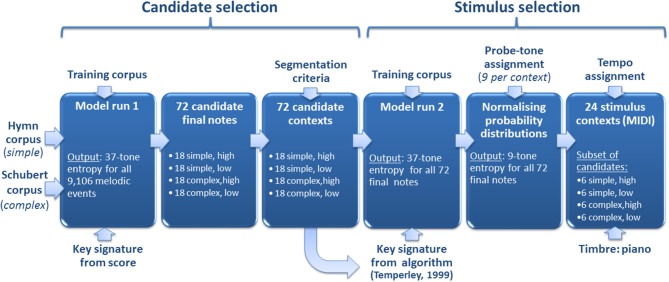Figure 1.
Stimulus selection. First, two corpora of stylistically simple (i.e., isochronous English hymns) and complex (i.e., lieder by Franz Schubert) music were analyzed by our computational model, resulting in entropy estimates for all 9106 melodic events. Second, the 18 highest and lowest scoring notes in each corpus gave rise to 72 (18 × 4) candidate melodic contexts by way of a segmentation procedure. Third, the computational model was run on the candidate contexts, resulting in updated entropy estimates. Fourth, a subset of 24 stimulus contexts was selected for use in the four conditions of the experiment (i.e., “simple, high entropy,” “simple, low entropy,” “complex, high entropy,” and “complex, low entropy”). This final selection procedure used entropy estimates based on normalized probability distributions over nine chromatically distributed continuation probe tones for each context.

